We arrived in Tikehau on Mother’s Day and were excited to be visiting a less traveled atoll. We had read that this atoll was known for the opportunity to snorkel and dive with manta rays so we were eager to visit. On Sunday, we proceeded to the Pearl Beach resort anchorage to settle in for the night. While this is a small island, apparently it is exclusive. Le Tikehau by Pearl Resorts appeared from a distance to be a stunning resort. It had overwater bungalows and a beautiful beach. The website lists a spa, various water activities and excursions, and a 5 star restaurant with options for private dining. It appears the rates for rooms are quite expensive, averaging around $1000 a night for an overwater bungalow. Because of its exclusivity, we could only view it from afar, the resort including the restaurant and bar are for resort guests only. But we were able to explore the surrounding beaches and waters which of course were beautiful. The beaches were pink sand and truly stunning.
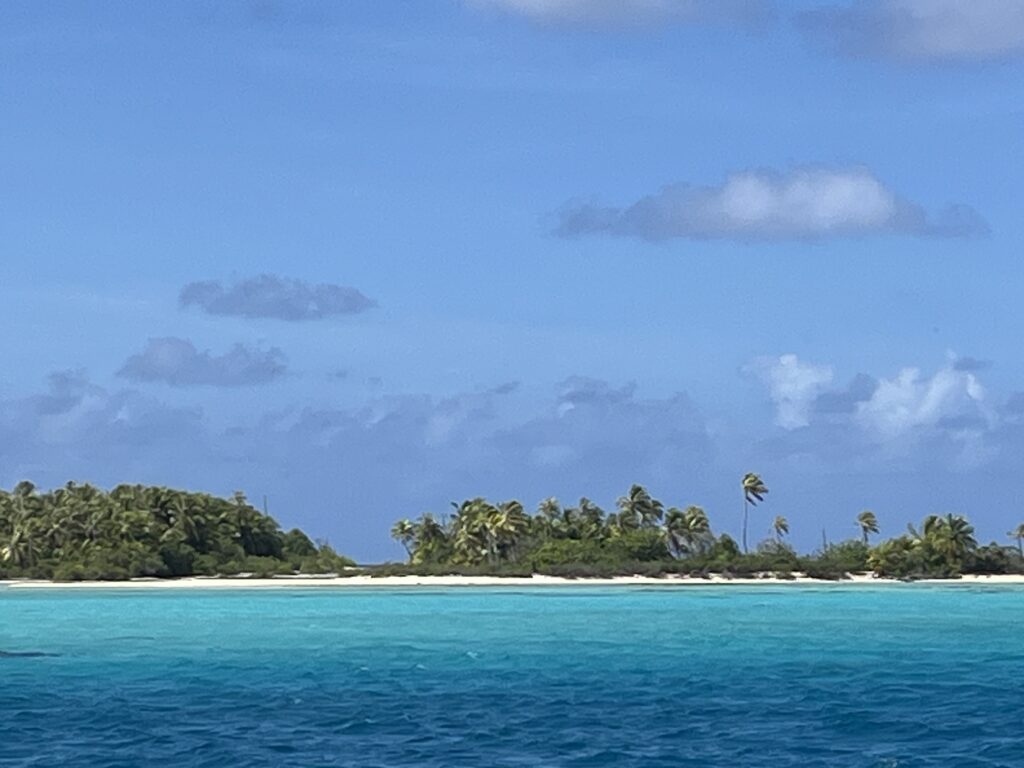
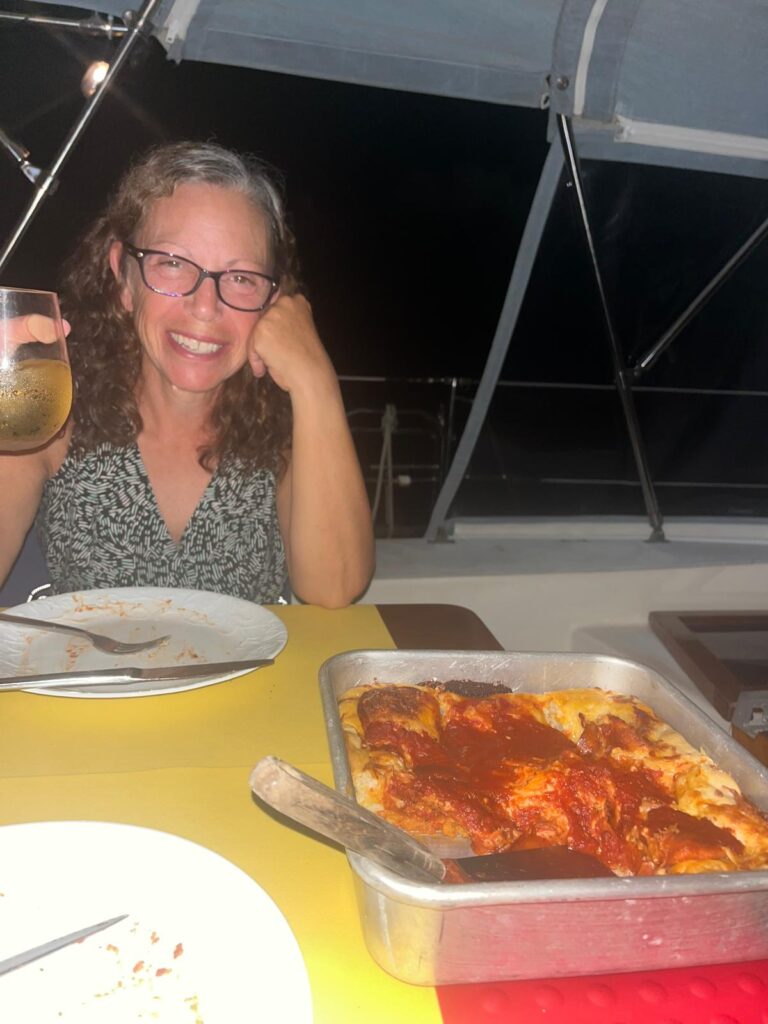
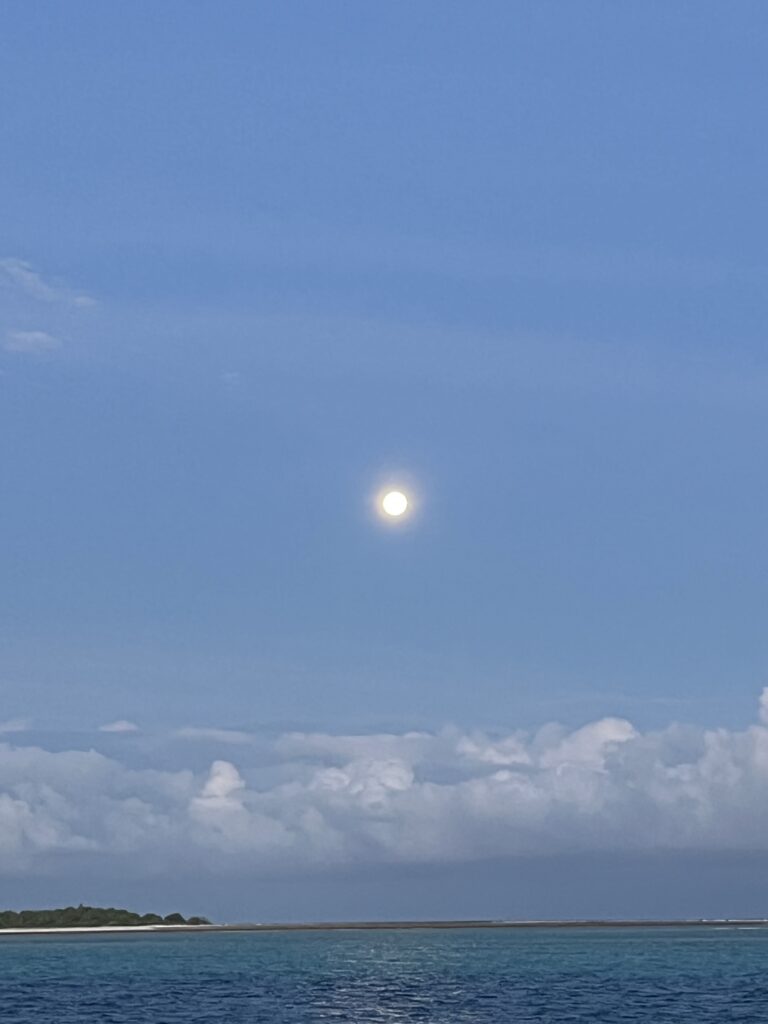
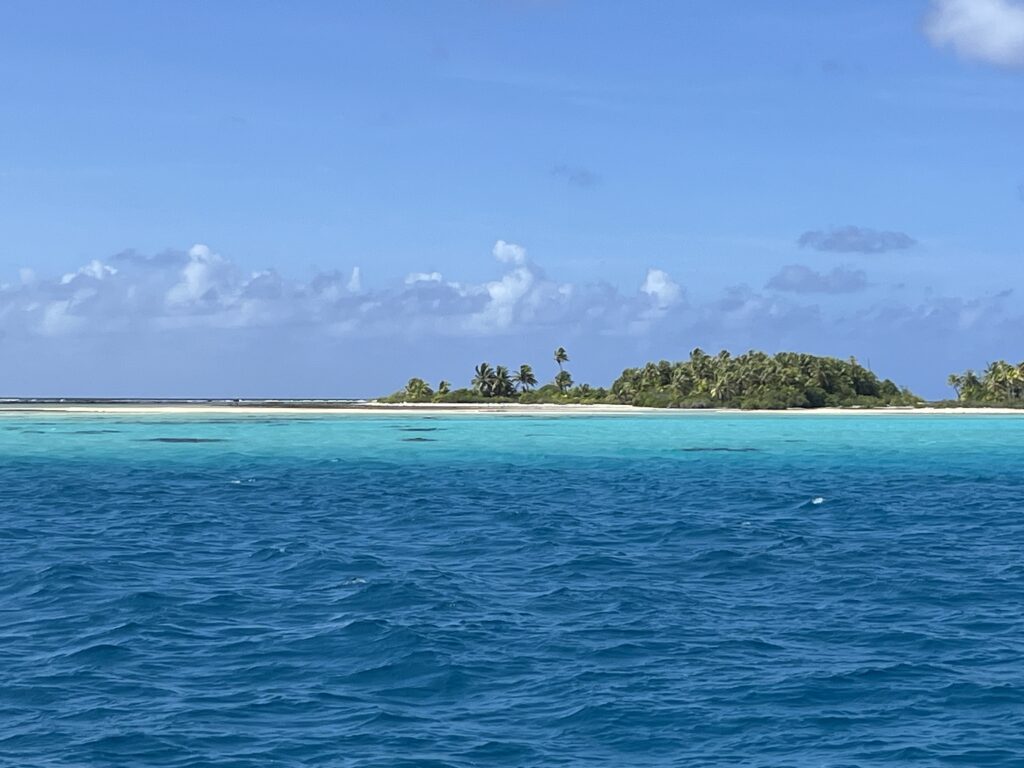
On Tuesday, we moved to the Motu Mauu anchorage. This is the anchorage we were most looking forward to with a chance to swim with the manta rays. We had read that this was a cleaning station for them and a place they visit in the early mornings. We got settled at anchor in the afternoon and did a brief exploration of the motu. The only thing on the motu is a VERY large tree full of MANY birds and the ruins of an old pearl farm. We took the dinghy to shore and walked the area around the reef and the motu. The coral around the reef was more red than we have seen previously and we could see why the sand is so pink here. The only wildlife we saw were the birds so we returned to Meraviglia to clean up and then visited with our friends on Fortuna for sundowners and popcorn! We made a plan to head to the motu together at 7:45 the next morning to try and find the mantas!
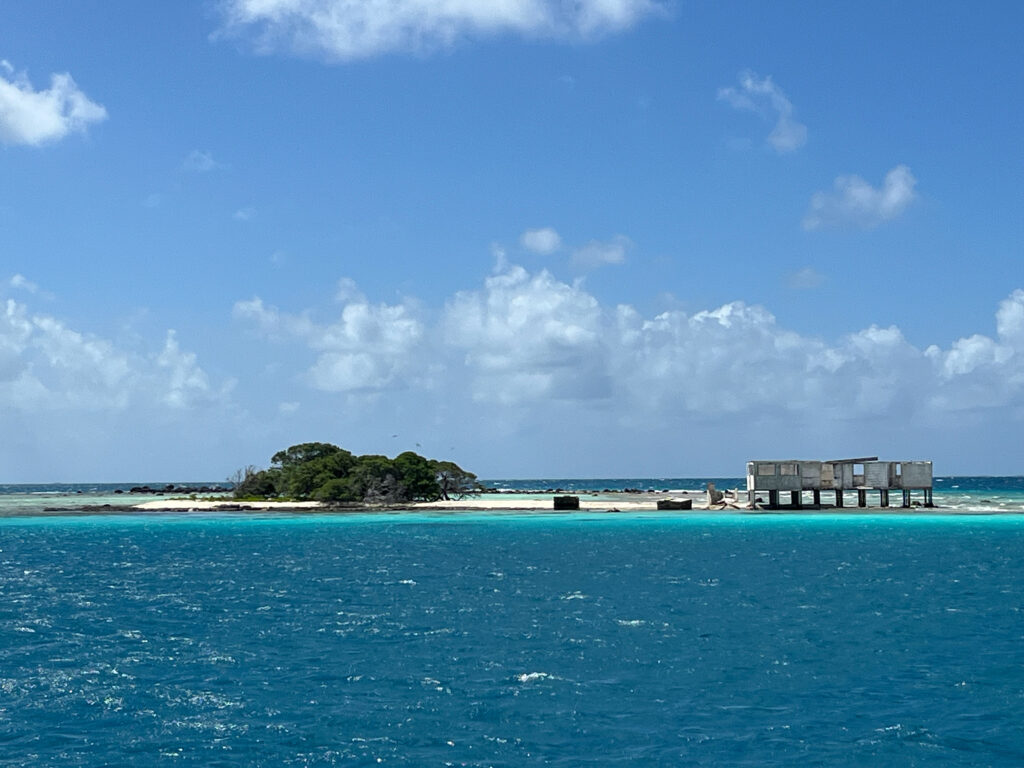
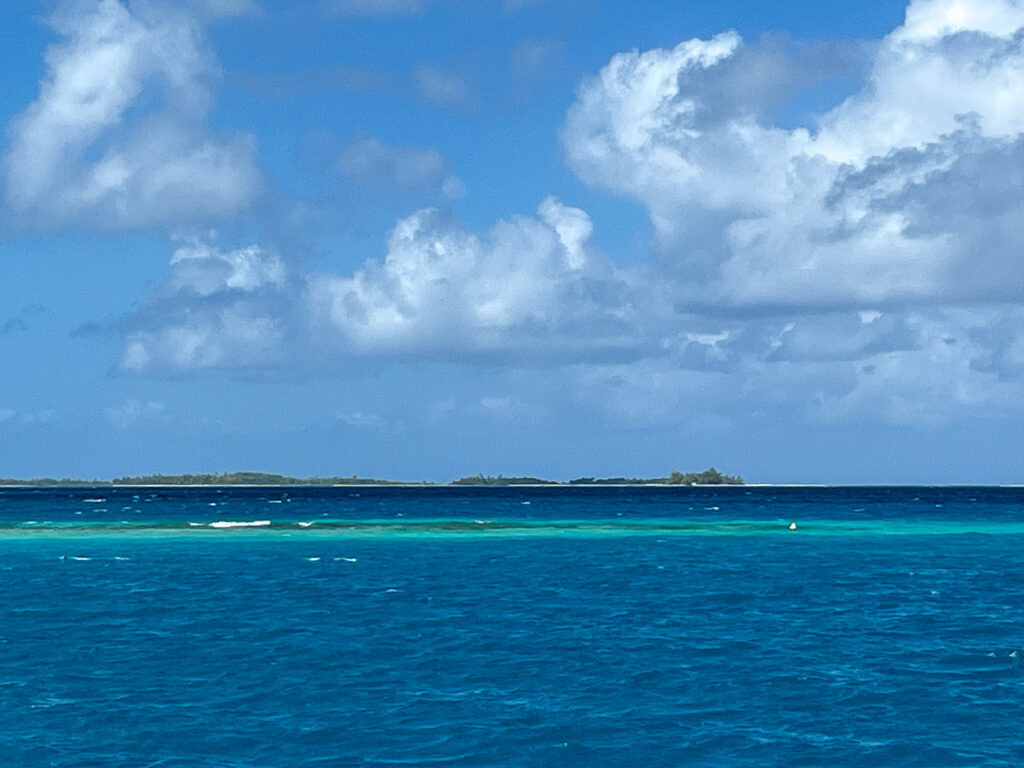
On Wednesday morning, we picked Emily and Taras up around 7:40am and headed to the reef to anchor the dinghy. The water was a bit rough due the wind and current but was very manageable. We swam around to the outside of the reef when we saw Taras gesturing that they had found a manta. What an amazing experience! We snorkeled over to watch a very large manta swim through the water as it was being cleaned by the smaller fish. Manta rays visit cleaning stations like Motu Mauu where cleaner fish, like wrasses and gobies, remove parasites and dead skin from their bodies, including from their mouths, gills, and skin. The manta was so graceful and not the least bit bothered by our appearance. It swam under and around us as it continued to be cleaned. We watched it for about 15 minutes before it swam into deeper water. It is the most amazing thing I have seen yet when snorkeling and definitely a bucket list item. We saw two different rays and got great video and pictures of the one who was closest to us which I was super excited about. We had read that an organization called Manta Trust keeps a database of mantas. In order to identify a manta, they need a picture of their belly all the way to the tail as each ray has a unique set of marks on its belly, similar to our fingerprints. If they have the manta on file, they will send you information about it. If they don’t, you have the opportunity to name the manta and help them begin tracking it. I was super excited to get back to the boat and input our information and the pictures!
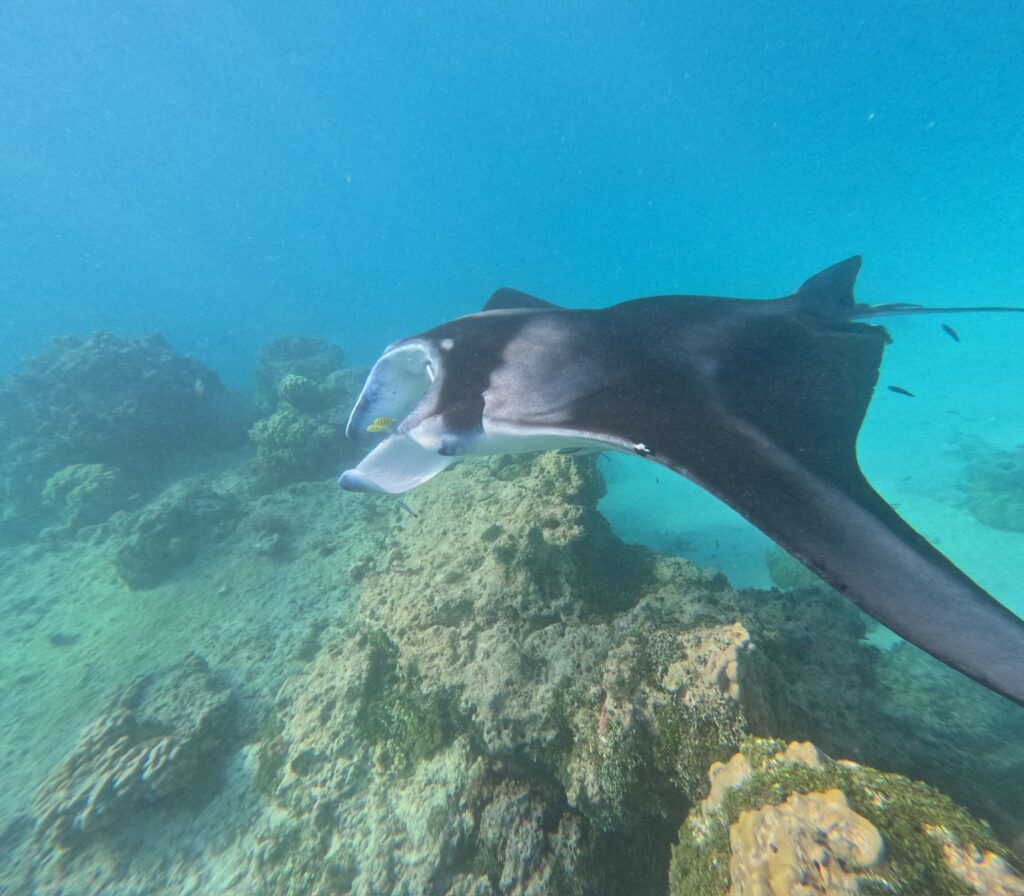
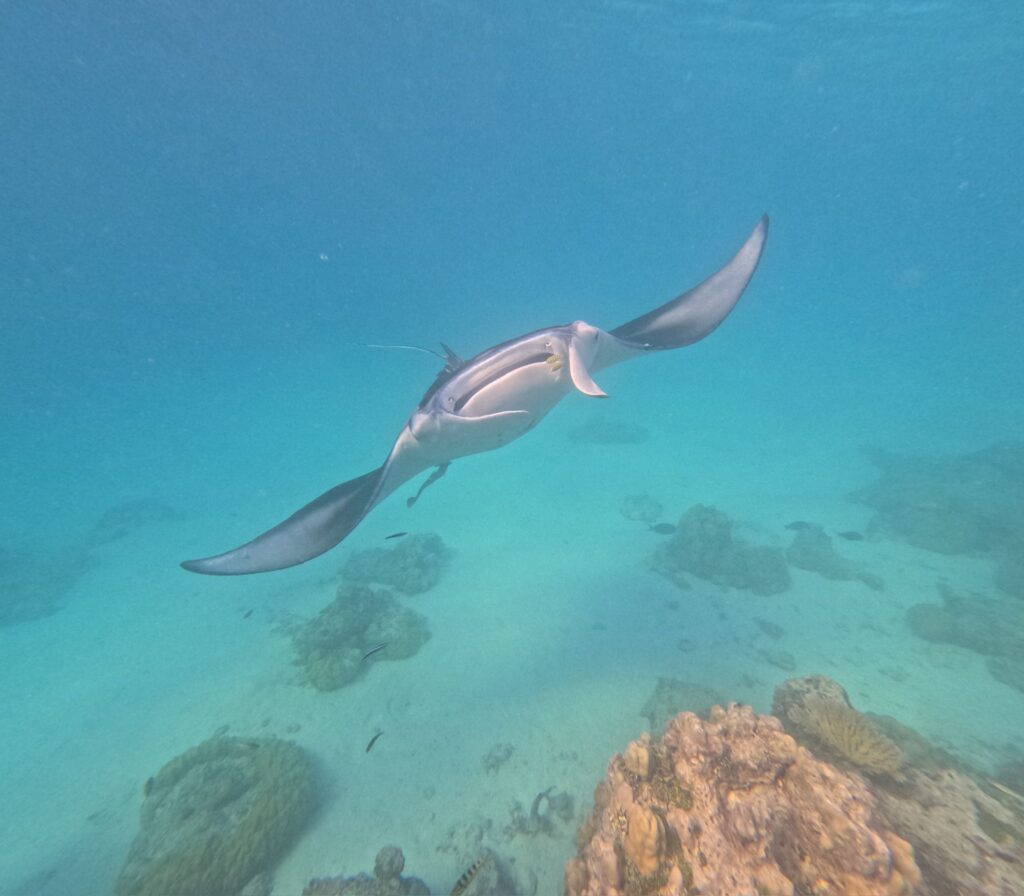
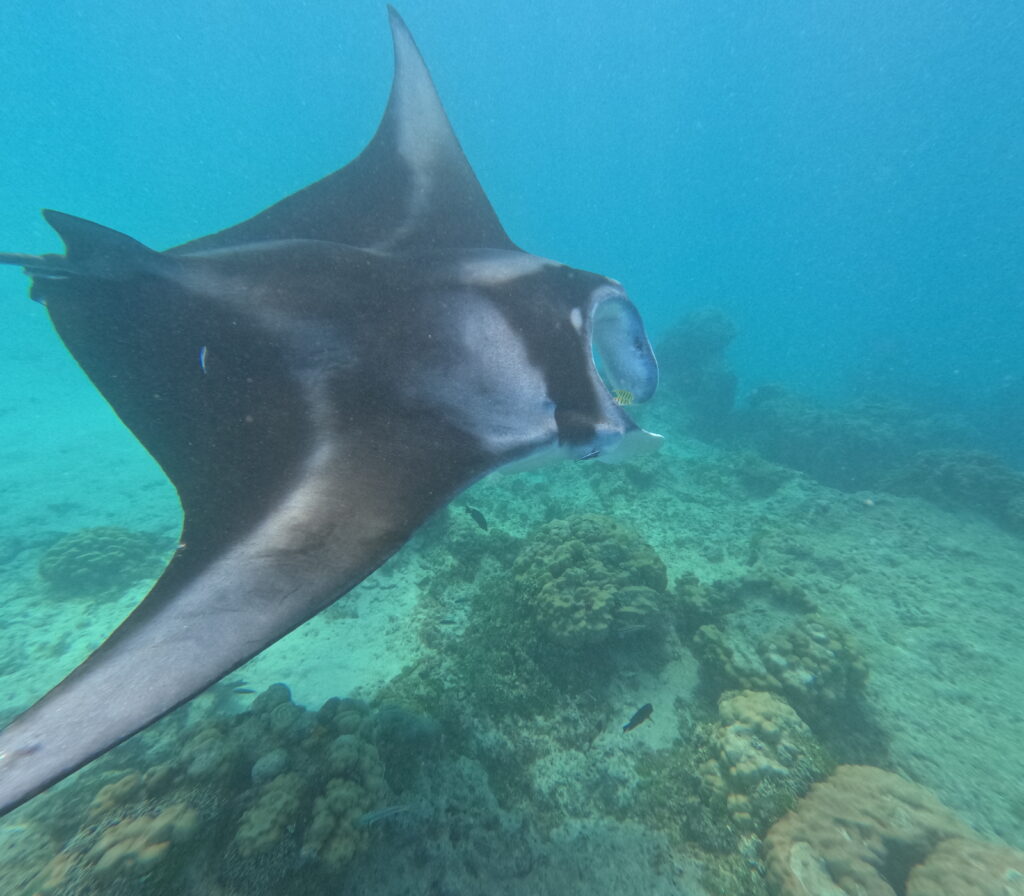

The Manta Trust is a UK based charity formed in 2011. They coordinate global manta and devil ray research and conservation efforts. Their team is composed of researchers, scientists, conservationists, educators and media experts; working together to share and promote knowledge and expertise and improve conservation of the ten species of rays found around the world. All of these species are now threatened with extinction, primarily due to fisheries. On their website it states their vision is a sustainable future for the oceans, where manta rays and their relatives thrive in healthy, diverse marine ecosystems. One of their many initiatives was to create an extensive MantaBase. MantaBase was created to utilize the power of citizen science to aid in the research and conservation of the world’s manta rays. They receive over 5,000 photo-ID submissions each year and, since its global roll-out in 2012, the MantaBase database has become the largest of its kind. Over 10,000 individual reef (Mobula alfredi) and oceanic (Mobula birostris) mantas have been identified, through more than 100,000 photographed sightings from over 70 countries. We were so excited to submit our pictures and contribute to this citizen science project. I filled out the online submission form and received an immediate email confirming receipt of the form and letting me know I would be contacted by one of their two local managers for the project.
In less than 24 hours, I had an email from Alice, the local manager. Ruta, a male ray, was who we had swam with! Ruta had been sighted twice previously, once in 2022 and again in 2023. Alice stated they were happy to receive our picture and know that he was still around and appearing healthy! She sent us a certificate documenting our sighting which will indeed be something we treasure from this visit. We felt incredibly grateful for this encounter and decided we would try again on Thursday to see if we could see the rays once more.
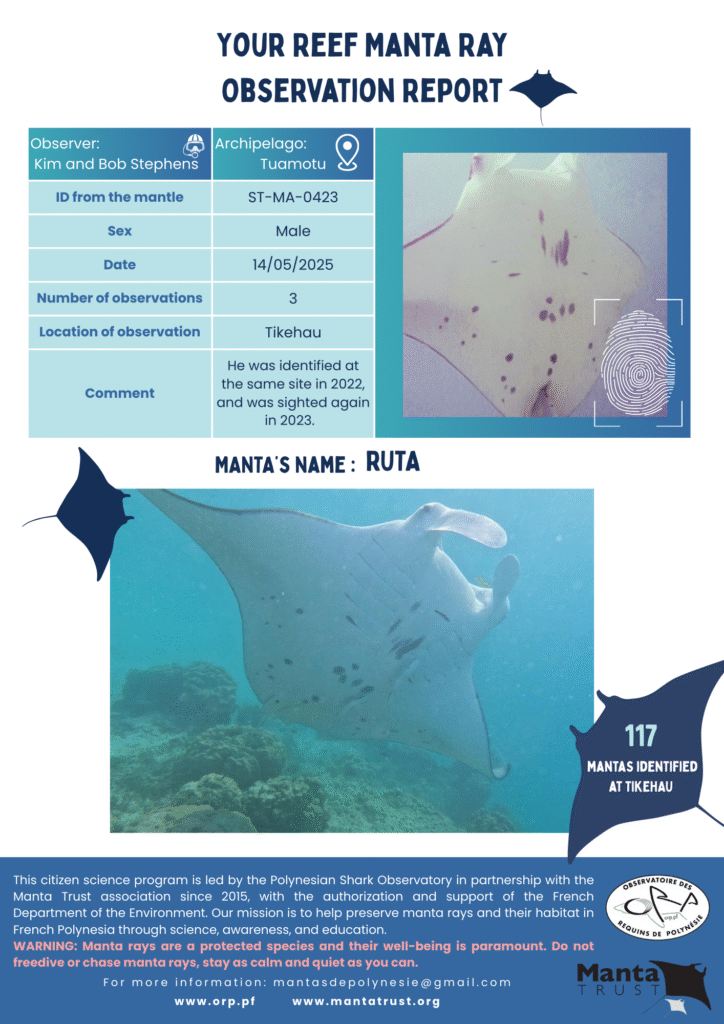
Thursday dawned with more wind and waves than the previous day. This makes the snorkeling and the visibility definitely more tricky but we decided the chance to see the rays was worth trying. We took the dinghy to the reef again and got our gear on to go over the side. We headed out towards the same spot as the day before and almost immediately I saw a fairly large black tip reef shark. We had not seen any sharks the day before. The wind and the current was definitely stronger than the day before so after swimming around for a bit, we decided to head back towards the dinghy. On the way, we did see a greater variety of reef fish than the day before and also more sharks. Just as we got close to the dinghy, I looked ahead and there was a ray moving towards us. This one was definitely not Ruta, it was larger and had a bigger wing span. I followed it for a little bit but the current and waves were strong so I headed back to the dinghy. Bob followed it longer and was able to get some great video and pictures before it swam away. We again submitted the information and are waiting to hear back and learn more about this gentle giant. What an incredible experience! This atoll was not originally on our list to visit so thanks to Taras and Emily from S/V Fortuna for suggesting we come here! We have had a great time exploring atolls with them and will be sad to say goodbye when we leave for Tahiti tomorrow. But we hope to catch up with them again sometime as we continue our journey! Next stop: Tahiti!
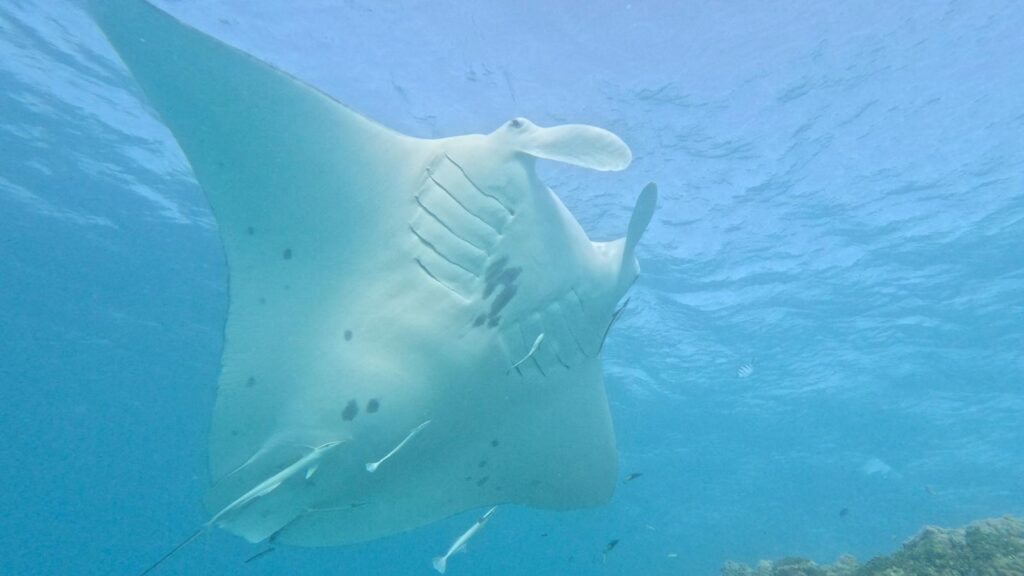
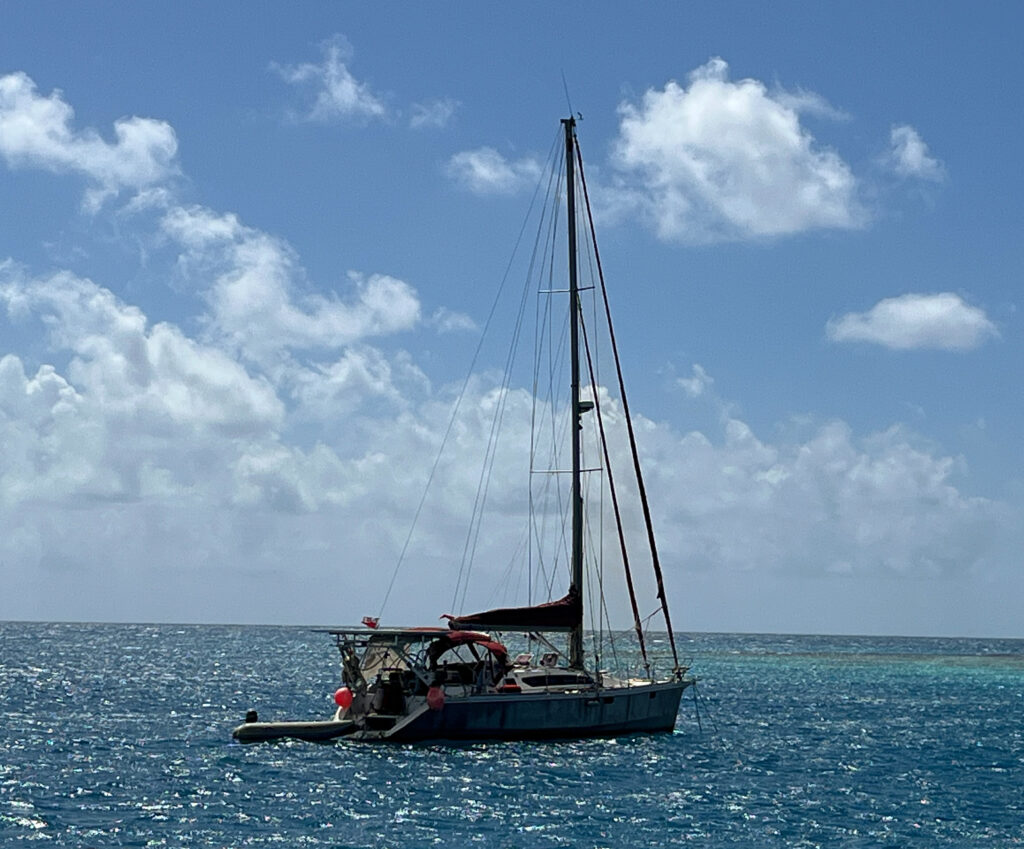
P. S. We heard back from Manta Trust and the ray we saw on Friday had not been seen since 2022. They also shared she was pregnant! (Yes, that is a baby bump visible on her belly) We also were given the honor of naming her!! We chose Maere which means wonderment in Tahitian just like Meraviglia means in Italian 😊. What an incredible gift to see and name this gentle giant!
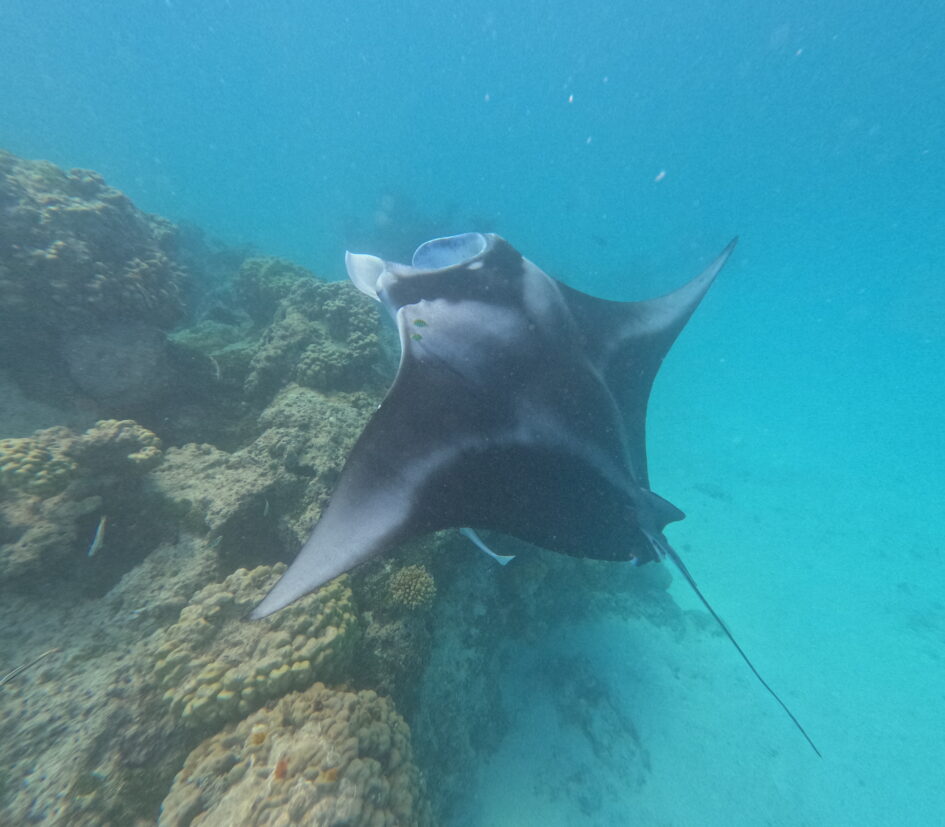
May 18, 2025 at 4:49 pm
Thanks for sharing! What a great service the Manta Trust provides!
May 18, 2025 at 5:27 pm
Whoa. You got to name a Manta Ray! How cool is that! Safe to assume “Mike” was your second choice?
Enjoy Tahiti. Looks very beautiful
May 18, 2025 at 7:12 pm
Your adventures never get old! Love the sense of wonderment your words convey!💜